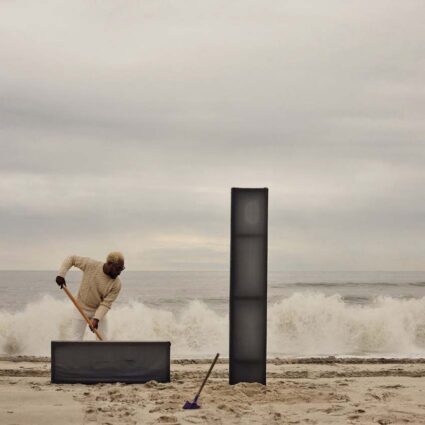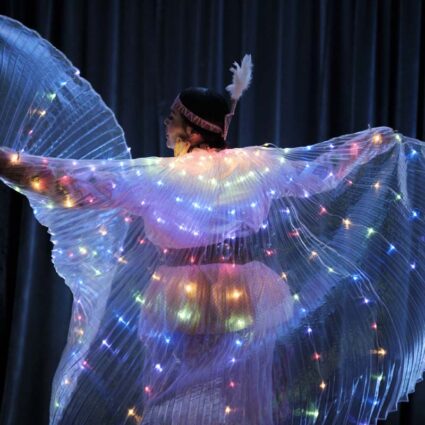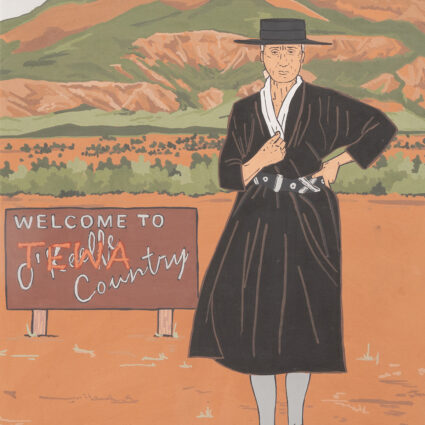Visiting the Powers Art Center, an exquisite private art collection nestled in the Colorado Rockies devoted to Jasper Johns, Emilie Trice wonders: is his work relevant in this day and age?
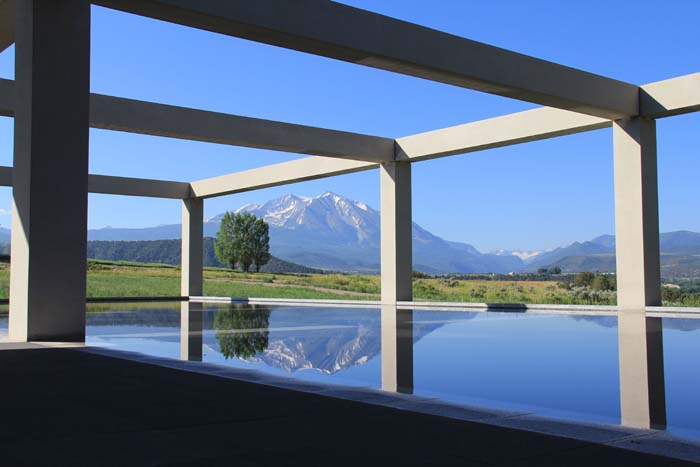
Jasper Johns: Things the Mind Already Knows
Powers Art Center, Carbondale, Colorado
The Powers Art Center is a private collection perched atop the Roaring Fork Valley’s foothills about forty-five minutes down-valley from Aspen, just off Highway 82. A fortress of serenity, the Center’s existence is announced by a single minimal sign that practically disappears into its red rock surroundings. The entrance is easy to miss, a few times (especially when driving by at sixty-five miles per hour), and seems purposefully clandestine—this is not a place to be stumbled upon accidentally.
Founded by Kimiko Powers in 2014 to showcase the contemporary art collection she and her late husband John amassed, the Powers Art Center radiates intentionality, with a stoic—almost monastic—aura and deliberate clarity of vision. During their marriage, John and Kimiko acquired works by many iconic names: Warhol, Lichtenstein, Rauschenberg, etc. Their collection, however, has an explicit focus on works on paper by Jasper Johns, a surprisingly humble medium for such a majestic monument—and just one example of the many contradictions embodied by the Center itself.
Designed by Tokyo-based architect Hiroshi Nanamori together with Glenn Rappaport of Basalt, Colorado’s Black Shack Architects, the Center combines a Zen Buddhist aesthetic with materials, such as sandstone, native to the valley. The building’s design “makes use of solar and geothermal systems,” according to the Center’s website, and manifests the founders’ commitment to sustainability with minimal ecological impact. The Center’s first impression is undoubtedly its most dramatic—at the entrance, an elegant reflecting pool mirroring Mount Sopris’s snow-capped peak is framed by a striking concrete lattice, welcoming visitors to the collection like a portal to modernity.
The space itself is massive at 15,000 square feet and comprised of two floors, with the upper level devoted strictly to the work of Jasper Johns and no one else. Currently, the Center is featuring two exhibitions: Jasper Johns: Things the Mind Knows upstairs (on view through April 30, 2023) and, on the lower level, Warhol in Colorado (through October 15, 2022).
It’s important to note that Johns is still making art today, at the age of ninety-two. Equally important is the fact that the Powers Art Center continues to collect his new work, advancing steadily towards the ultimate goal of representing the artist’s entire oeuvre of prints and works on paper. It’s a lifetime commitment and a devotional form of cultural patronage, both of which seem increasingly anachronistic in today’s hyper-distracted and trend-obsessed art world.
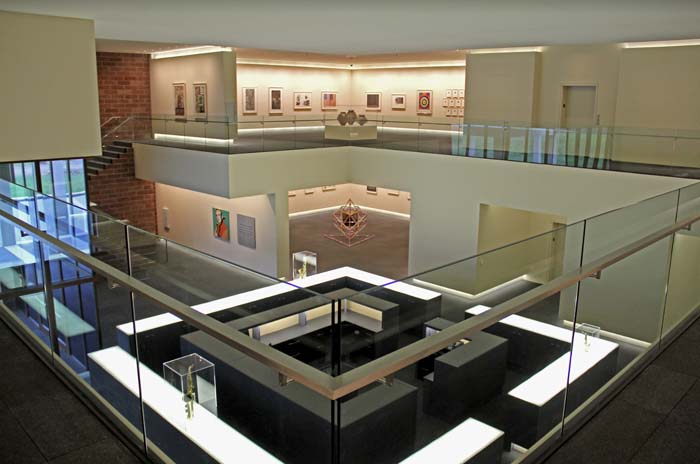
The result is a veritable shrine, a temple to the artistic efforts of one individual who influenced an entire movement and became a beacon of post-war American art. In Things the Mind Knows, Johns’s series are divided by galleries: one features his flags and targets, the next showcases his crosshatch works, then maps, and numbers, and so on.
The artist’s evolution over his entire lifetime reveals more than his aesthetic tendencies and affinity for symbols that, when accumulated, represent a kind of psychographic portrait of U.S. American identity—if such a thing exists.
Johns rose to prominence alongside the legendary New York art scene that birthed Abstract Expressionism and Pop Art. He showed with Leo Castelli, arguably the most influential art dealer of the postwar era. Johns and Robert Rauschenberg were lovers years before the gay rights movement, like their friends and sometimes-collaborators Merce Cunningham and John Cage. Collectively, Johns and his creative cohort defined avant-garde culture in the U.S. for generations of artists.
Johns also served in the Korean War; he lived through the AIDS crisis, stock market crashes and economic recessions, the advent of the internet, and a global pandemic, and is still going strong. He remains one of the most celebrated artists of the postwar era. In 2010, one of Johns’s Flag paintings sold for more than $100 million dollars, a record for a living artist at the time (and not his first).
And yet, the 20th century is definitively (and thankfully) over—an epoch that now feels like ancient history, a rose-colored fever dream that drove the U.S. directly into MAGA hysterics. For some, reportedly, “the good old days” were precisely that, while for many others, those days were defined by racism, gender- and sexually-based violence, and a desperate struggle for basic civil rights.
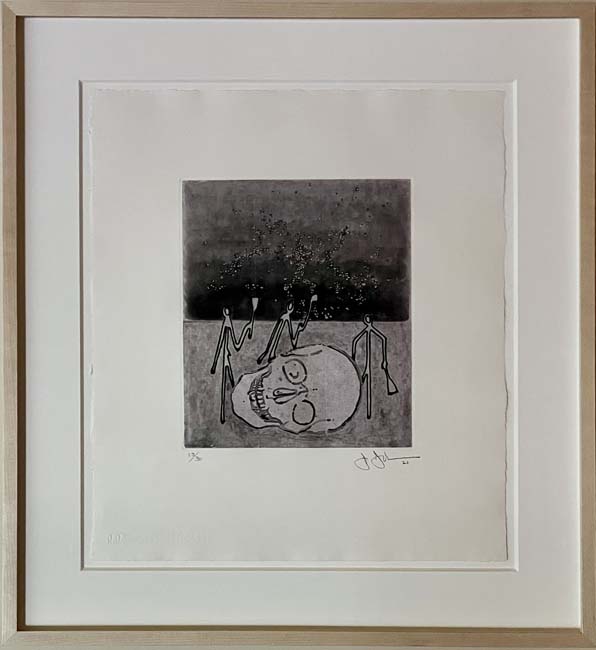
As artists today use their work to confront social injustice, fluctuating identity politics, issues of decolonization, migration, and climate change, is Jasper Johns still relevant? When compared to the precarious and unpredictable world that exists just beyond the Powers Art Center’s low-lit, eco-conscious ambience, Johns’s art feels practically quaint—a postcard from the past (when stamps only cost a nickel, etc.).
In that sense, visiting the Powers Art Center is somewhat of a pilgrimage to those rhetorical “simpler times,” with Johns serving as an eternal patron saint. But, Johns’s latest works also prove that he’s still evolving, still growing and changing, just like the rest of us. In his most recent works, created in 2021, the artist is clearly ruminating on his own mortality, depicted as a totentanz (or dance of the dead), performed by skeletons under star-lit heavens.
These pieces hit differently than Johns’s previous works, unmasking the emotions and humanity that seem absent from his more abstract compositions. This is the real Johns—an old man nearing the end of his time, staring into the abyss while taking inventory of a life well-lived, and then getting back to work. Ultimately, it’s that legacy—an unwavering and embodied sense of purpose—that makes the Powers Art Center such a powerful and worthwhile experience… if you can find it.
Jasper Johns: Things the Mind Already Knows is on view until November 4, 2022 at the

